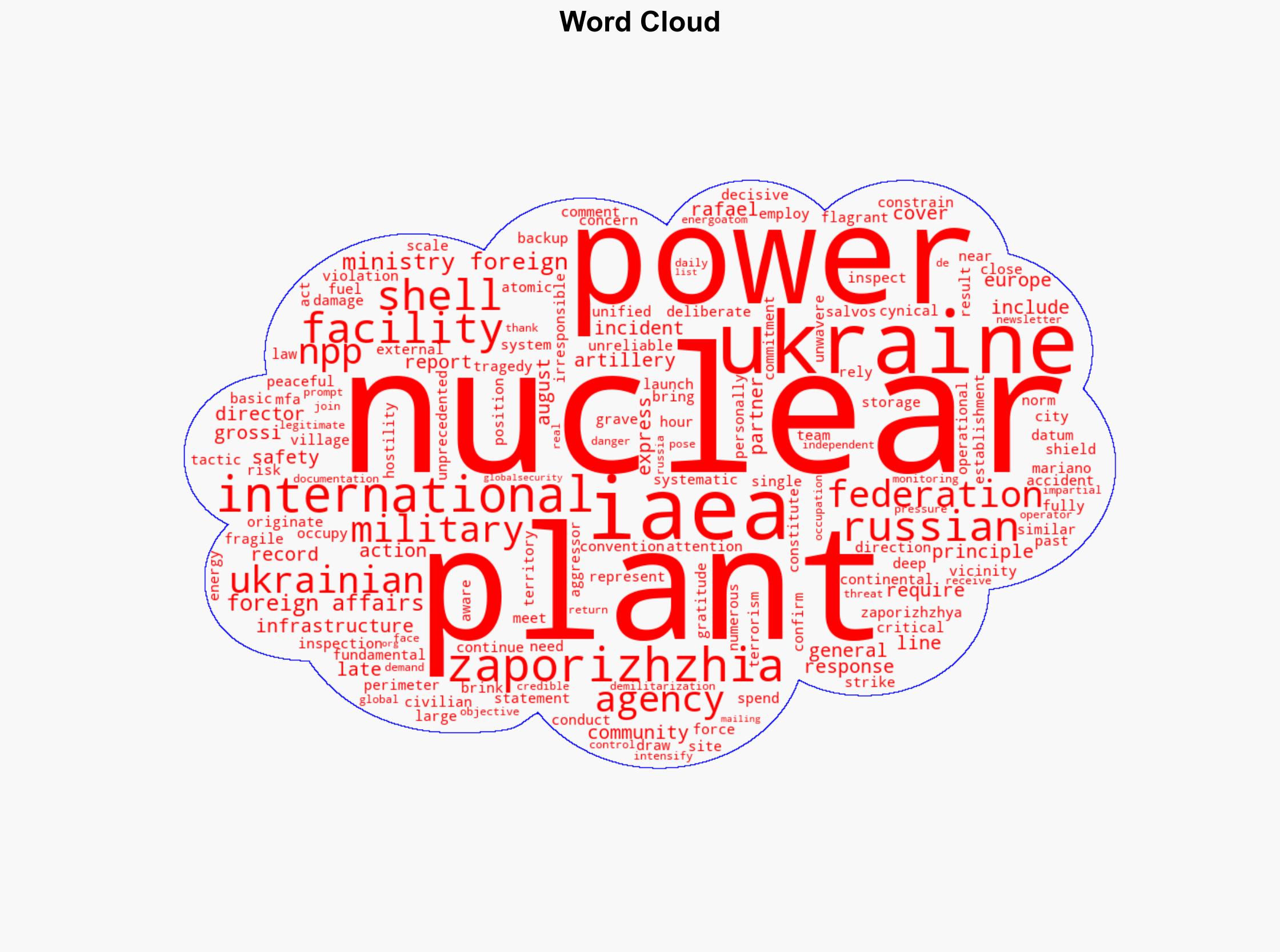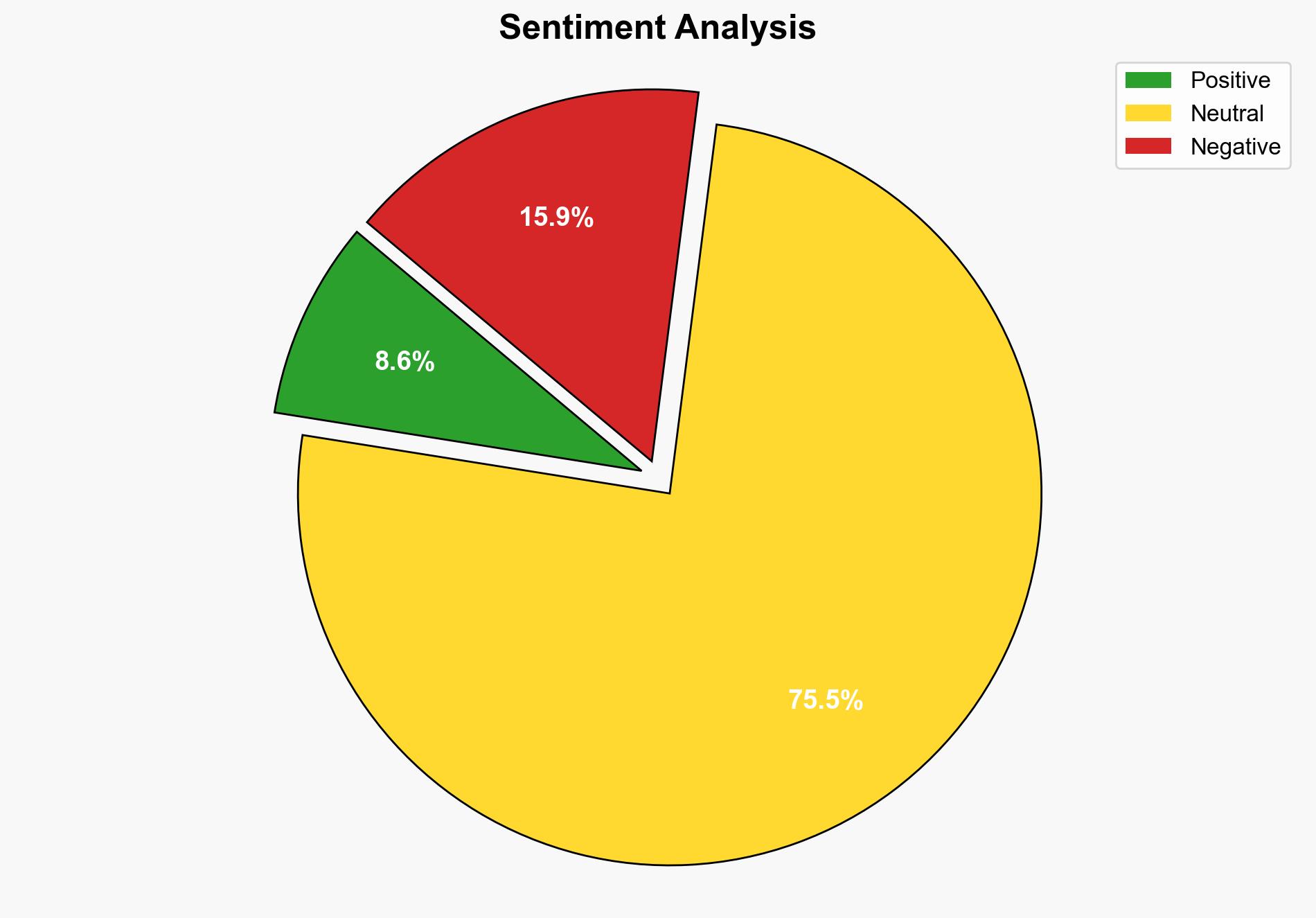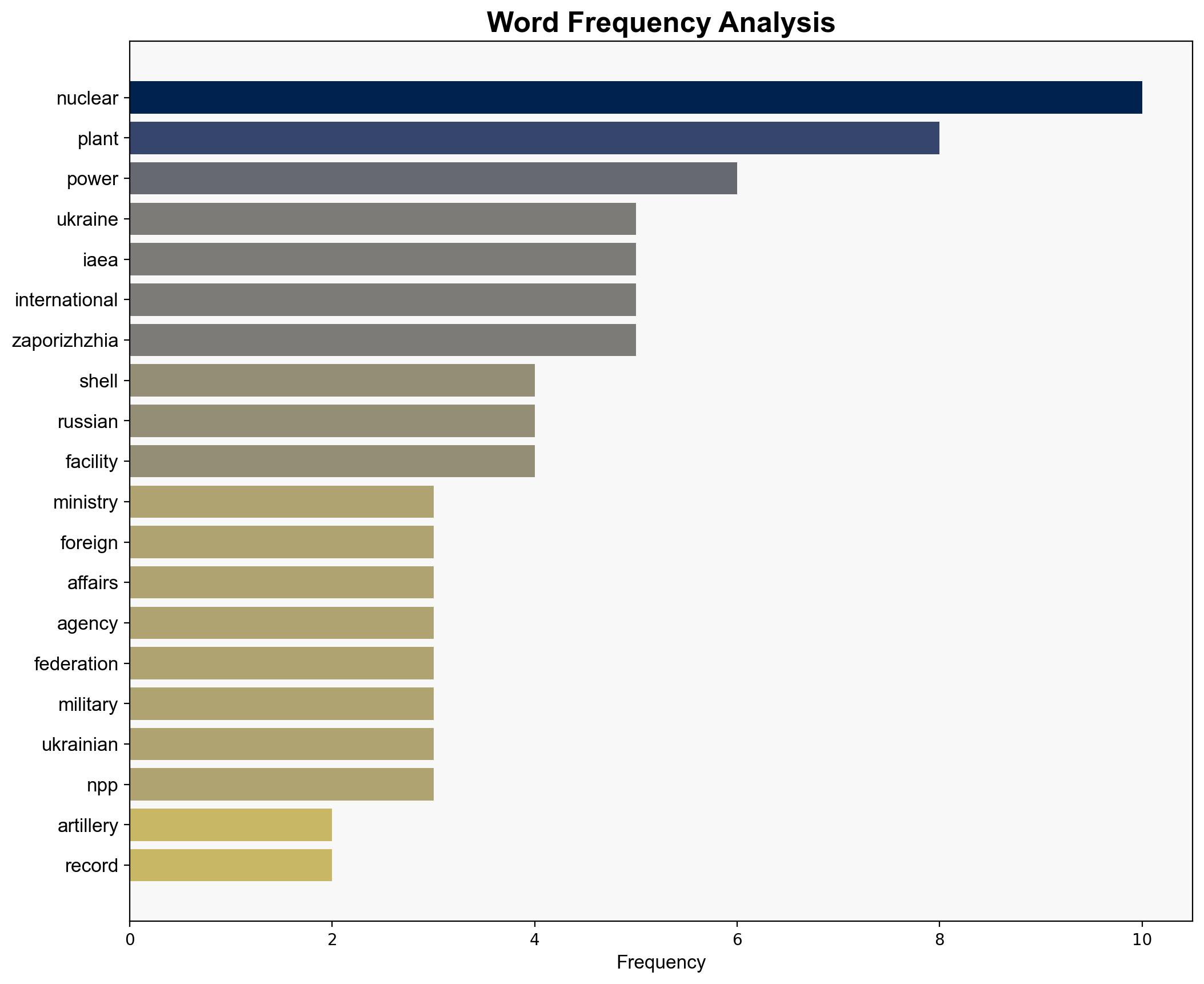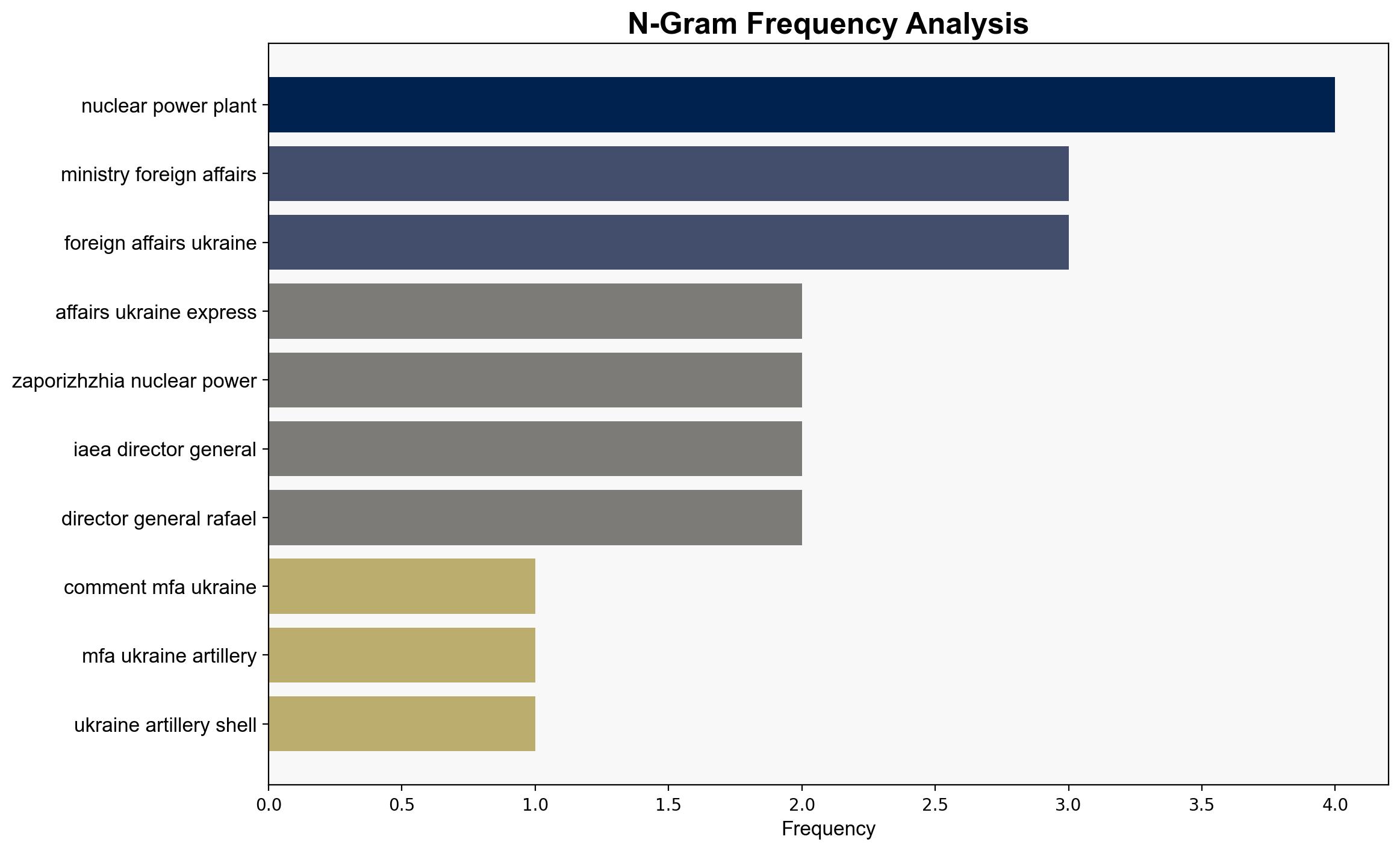Comment by the MFA of Ukraine regarding the artillery shelling near the Zaporizhzhya Nuclear Power Plant recorded by the IAEA – Globalsecurity.org
Published on: 2025-08-08
Intelligence Report: Comment by the MFA of Ukraine regarding the artillery shelling near the Zaporizhzhya Nuclear Power Plant recorded by the IAEA – Globalsecurity.org
1. BLUF (Bottom Line Up Front)
The most supported hypothesis is that Russian forces are using the Zaporizhzhya Nuclear Power Plant as a strategic military shield, increasing the risk of a nuclear incident. Confidence level: Moderate. Recommended action: Intensify diplomatic pressure on Russia for demilitarization and enhance international monitoring efforts.
2. Competing Hypotheses
1. **Hypothesis A**: Russian forces are deliberately using the Zaporizhzhya Nuclear Power Plant as a military shield to deter Ukrainian counterattacks and international intervention, exploiting the plant’s strategic location.
2. **Hypothesis B**: The artillery shelling near the plant is a result of miscommunication or lack of control within Russian military ranks, leading to unintentional escalation near a sensitive site.
Using ACH 2.0, Hypothesis A is better supported by the consistent pattern of military activity around the plant and the strategic advantage it provides. Hypothesis B lacks corroborative evidence and contradicts the systematic nature of the shelling reported.
3. Key Assumptions and Red Flags
– **Assumptions**: Hypothesis A assumes deliberate strategic intent by Russian forces, while Hypothesis B assumes operational disarray.
– **Red Flags**: The absence of direct evidence linking orders to high-level Russian command could indicate either hypothesis. The reliability of sources and potential bias in Ukrainian reports should be considered.
– **Blind Spots**: Limited access to independent verification due to the conflict zone restricts comprehensive assessment.
4. Implications and Strategic Risks
The continued militarization of the Zaporizhzhya Nuclear Power Plant poses significant risks, including potential nuclear accidents and regional destabilization. Escalation could lead to broader international conflict, economic sanctions, and heightened cyber threats targeting critical infrastructure.
5. Recommendations and Outlook
- Engage international bodies to increase diplomatic pressure on Russia for demilitarization of the plant.
- Enhance IAEA monitoring capabilities to ensure accurate reporting and accountability.
- Scenario Projections:
- Best Case: Successful demilitarization and return of control to Ukrainian authorities.
- Worst Case: Nuclear incident leading to widespread contamination and international crisis.
- Most Likely: Continued tension with intermittent shelling, requiring sustained international diplomatic efforts.
6. Key Individuals and Entities
– Rafael Mariano Grossi (IAEA Director General)
– Ukrainian Ministry of Foreign Affairs
– Russian military command (unidentified specific individuals)
7. Thematic Tags
national security threats, nuclear safety, regional conflict, international diplomacy





